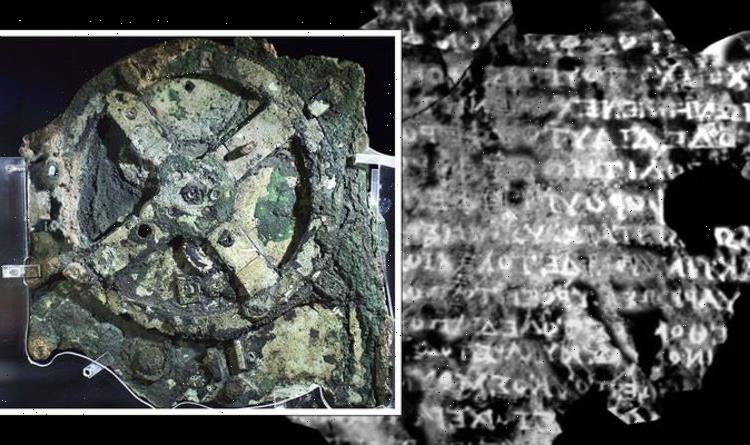Antikythera Mechanism discovered in shipwreck 115 years ago
We use your sign-up to provide content in ways you’ve consented to and to improve our understanding of you. This may include adverts from us and 3rd parties based on our understanding. You can unsubscribe at any time. More info
The ancient Greeks lived from 700 to 480 BC and are known for the many breakthroughs they oversaw in the arts and sciences. Perhaps one of their lasting creations is what is known as the polis or city state, which became a permanent feature of Greek political life for hundreds of years. This period of time came shortly after the ‘Greek Dark Ages’, which saw people living scattered across the land in small farming communities.
But slowly, these villages grew in size, expanded, built walls and organised cohesive communities, later developing governments and drawing up what we today would see as a constitution or common set of laws.
A number of relics from this time have turned up across not only Greece but the wider empire, which at its peak included parts of modern-day Italy, France, Spain, Turkey and North Africa.
Many have left researchers awestruck, but none more so than the Antikythera: a 2,000-year-old hand-powered orrery — a mechanical model of the Solar System — described as the world’s oldest instance of an analogue computer.
Archaeologists first found it at the turn of the 20th century, in 1901, off the coast of the Greek island Antikythera.


The device was found among a wider treasure trove which included marble statues, elegant vases, glistening jewellery and ancient coins.
The mechanism itself, researchers first believed, was some sort of corroded metal, perhaps an ancient dictionary, that no one knew what to do with.
In 1902, archaeologist Valerios Stais identified a gear inside the piece, but it was not until some 70 years later when Professor Tony Freeth and his team from University College London (UCL) conducted extensive research on the model and carried out its first-ever X-ray.
This decisive research suggests that the ancient Greeks would once have used it to predict astronomical positions and eclipses decades in advance.
JUST IN: Egypt news: ‘Strange’ spots discovered in Tutankhamun’s tomb explained

Following his investigation, Prof Freeth noted how the Antikythera has completely displaced the story of human technology by thousands of years, changing the face of its history.
Speaking during the BBC’s short reel ‘The ancient computer that simply shouldn’t exist’, he explained how the inscriptions found on the face of the device after the X-ray helped the team to decipher its true meaning.
He said: “There’s thousands of text characters in Ancient Greek which tell us how it worked.
“It displayed the ancient Greek cosmos — the Sun, Moon and planets — in a sort of ring system.
DON’T MISS
Northern Lights show TONIGHT – aurora borealis visible in Shropshire [REPORT]
Solar storm warning: Earth to be battered this weekend [INSIGHT]
Scientists discover new approach to beat antibiotic-resistant bacteria [ANALYSIS]


“It’s brought back the history of technology to a much earlier time.
“It is completely astonishing that the ancient Greeks firstly had the conception of making this technology, and secondly the ability to actually physically make it.
“We’ve had to rethink the history of technology completely as a result of this single object.”
While Prof Freeth’s work has allowed researchers to understand the workings of the device, the ‘why’ question remains.

He believes the answer to this is that it was conceived in order to calculate the Greeks’ astrological theories.
While being able to predict the patterns of the night sky is today something taken for granted, Prof Freeth noted: “In those days, the idea that your scientific theories could be mechanised was absolutely astonishing.”
Today, the Antikythera mechanism is kept in a museum in Athens and is split into 82 fragments with much of it missing.

On finding the inscriptions inside the device, Prof Freeth revealed a world of secrets: a “user guide” to the mechanism through instructions embedded into the folds of corroded bronze.
It is from this finding that nearly all subsequent research breakthroughs about the Antikythera mechanism have been made.
Prof Freeth and his team are now taking their theoretical model and will use Greek techniques to build a physical model of the mechanism.
It is hoped that modern technology added on top of this creation may reveal “more secrets” of the ancient world.
Source: Read Full Article
